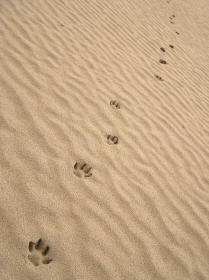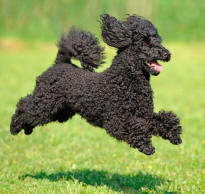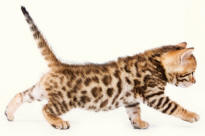Glossary

Suspension Phase
A phase of a gait when all four feet are off the ground.


Trail
Series of traces made by, and left behind by, an organism.
Includes track and sign.

Trail of a dog in sand.
Includes track and sign.

Trail of a dog in sand.
Rotatory Gallop Pattern
Trail of a gallop that has two suspension phases, and is characterized by the following footfall sequence:
1. right hind foot
2. left hind foot
3.first extended suspension phase (all feet airborne and extended)
4. left forefoot
5. right forefoot
6.second collected suspension phase (all feet airborne and gathered under the body)
1. right hind foot
2. left hind foot
3.first extended suspension phase (all feet airborne and extended)
4. left forefoot
5. right forefoot
6.second collected suspension phase (all feet airborne and gathered under the body)
Supported Gallop
A gallop in which at least one limb in on the ground at any one time.
This is more usually known as a canter, and is contrasted with the (full) gallop.
This is more usually known as a canter, and is contrasted with the (full) gallop.
Footfall
Footstep(s). The setting down of feet upon the ground.
The pattern of footfall constitutes the gait.

The pattern of footfall constitutes the gait.

Ipsilateral
Relating to the same side of the body.
For example, ipsilateral limbs are limbs that are on the same side of the body.
For example, ipsilateral limbs are limbs that are on the same side of the body.
Transverse Gallop
The fastest gait of many dogs, but not as fast as the
rotatory gallop, as used by sighthounds, for example.
There is just one suspension phase in each stride.
This gait is exemplified by race horses.
Stride length is about twice that of the canter.
There is just one suspension phase in each stride.
This gait is exemplified by race horses.
Stride length is about twice that of the canter.
Title9
text





